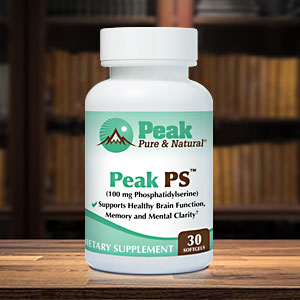Get Easy Health Digest™ in your inbox and don’t miss a thing when you subscribe today. Plus, get the free bonus report, Mother Nature’s Tips, Tricks and Remedies for Cholesterol, Blood Pressure & Blood Sugar as my way of saying welcome to the community!
The 3 most dangerous daily sources of aluminum and the damage it does

For many years, I’ve purchased aluminum-free deodorant.
The connection between aluminum in deodorant and breast cancer scared me enough that I decided not to take the risk. Maybe you decided on the same thing. But here’s where I went wrong…
I eliminated aluminum from my deodorant, but I didn’t pay attention to any other sources of aluminum. Because the fact is, aluminum is in so many everyday things.
It’s in your cooking utensils. In your cosmetics. Wrapped around your leftovers. Invisible aluminum is even hiding in your food and water. And as we’ve learned from the aluminum-breast cancer connection, too much aluminum exposure isn’t healthy…
It can cause neurotoxicity — a form of damage to the central and/or peripheral nervous system. In fact, aluminum’s link to Alzheimer’s has only grown stronger, with more research substantiating the connection.
So, you want to stay on top of your aluminum exposure (beyond what type of deodorant you buy), especially since recent research shows plenty of people are still exposed to far too much…
People of all ages are exposed to too much aluminum
A new study published in the journal Archives of Toxicology found that aluminum exposure is still too high for people in all age groups.
The study was conducted by German researchers. On the positive side, they found that aluminum exposure from food is going down. It’s 50 percent of the tolerable weekly limit set by the European Food Safety Authority (EFSA).
But aluminum exposure from other sources is still dangerously high. The biggest culprits are:
- Cosmetics and personal care products
- Food packaging
- Cooking tools
Researchers say the use of uncoated aluminum cooking tools and aluminum-containing beauty products could cause a large group of people of all ages to permanently exceed safe levels of aluminum exposure and accumulate aluminum in their bodies.
Related: How to recognize these 5 toxic dangers (slideshow)
As a reminder of just how dangerous aluminum exposure can be, I want to mention that yet another study came out recently linking aluminum to Alzheimer’s. This study found scary amounts of aluminum in the brains of people who died with Alzheimer’s disease.
How to avoid aluminum exposure
So, do your due diligence when it comes to aluminum. I know I plan to start doing mine better. Here are a few tips for getting started:
- Check your cosmetics and personal care products. Start with deodorant and toothpaste, the two most common sources of aluminum, but leave no cosmetic label unexamined. Aluminum also frequently turns up in eye shadow, nail polish, eyeliner, blush, hair dye, brow liner, mascara, sunscreen, face masks, and hairspray.
- Don’t prepare or store foods in uncoated aluminum dishes or pots, or in aluminum foil. This applies to all foods but you should be especially careful about acidic and salty foods. Aluminum tends to leach into these foods more.
- Ditch aluminum cooking utensils. Organic bamboo, silicone or stainless steel are all healthier alternatives.
- Be careful when you get takeout. I know I’ve gotten plenty of aluminum takeout containers in my day. It may seem weird, but I plan to start bringing my own Tupperware to restaurants when I go out to eat. Consider doing the same.
Editor’s note: Have you heard of EDTA chelation therapy? It was developed originally to remove lead and other contaminants, including heavy metals, from the body. Its uses now run the gamut from varicose veins to circulation. Click here to discover Chelation: Natural Miracle for Protecting Your Heart and Enhancing Your Health!
Sources:
- How can we reduce our exposure to potentially harmful aluminum? — Medical News Today
- Alzheimer’s Disease Linked to Exposure to Aluminum — SciTechDaily
- Aluminum Powder — Environmental Working Group













